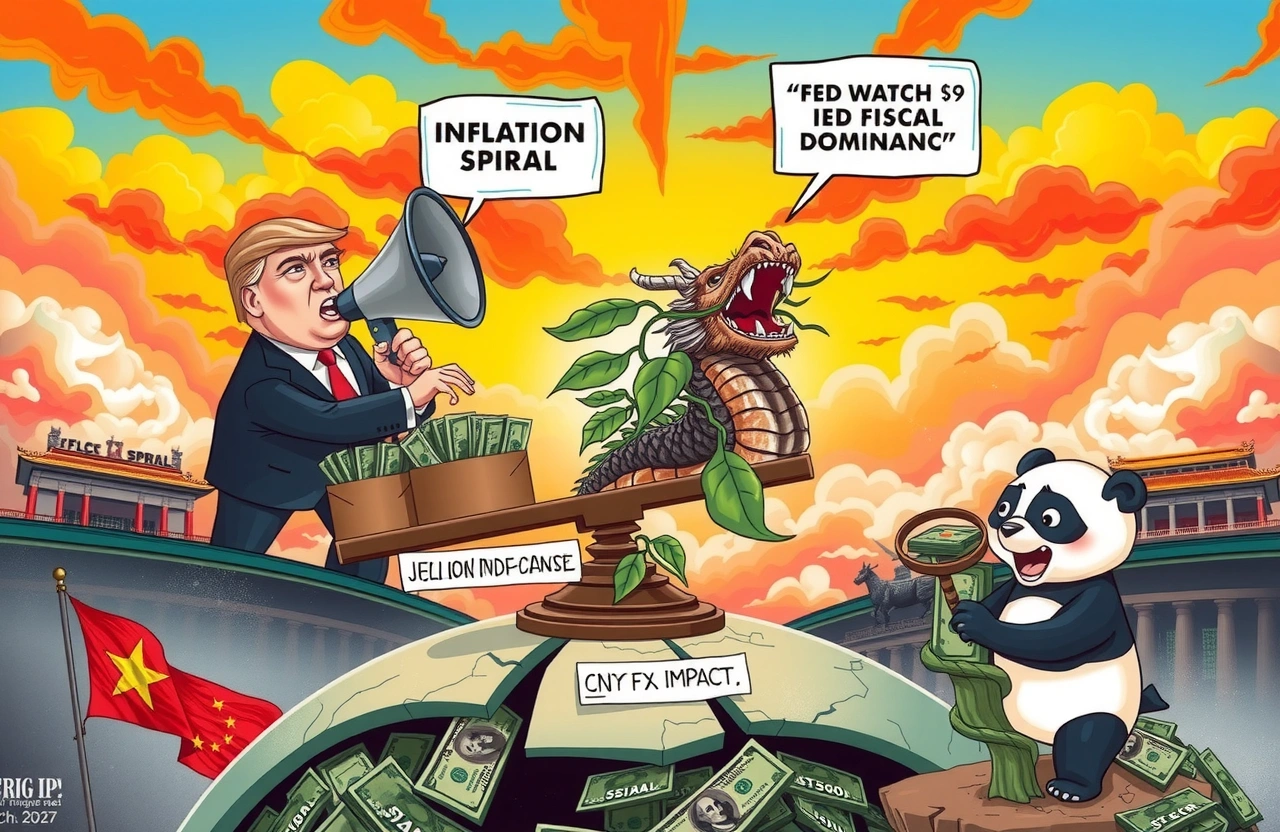The Hidden Fiscal Agenda Behind Rate Cut Demands
President Trump’s relentless public pressure on Federal Reserve Chair Jerome Powell to slash interest rates masks a deeper fiscal strategy that could fundamentally reshape America’s economic policy. According to Wall Street Journal veteran reporter Greg Ip, Trump seeks to engineer lower borrowing costs not merely to stimulate growth, but to facilitate financing of massive tax cuts through an approach economists call “fiscal dominance.” This controversial tactic—where central banks prioritize government financing needs over inflation control—historically triggers hazardous economic cycles.
Decoding Trump’s Motivation for Rate Cuts
Banking sources reveal Trump’s unusual interest in monetary policy stems directly from Treasury financing requirements:
- The administration faces growing pressure to finance tax cuts passed earlier this year
- Lower rates reduce government debt servicing costs by an estimated $120B annually per 50bps cut (CBO analysis)
- Trump aims to manipulate the traditional relationship between budget deficits and interest rates
The Fiscal Dominance Model Explained
Fiscal dominance occurs when central banks sacrifice inflation targets to accommodate government borrowing needs—a pattern more common in emerging economies than advanced nations. As Gregory Ip noted, this approach becomes “a powerful stimulus” temporarily while creating long-term vulnerabilities. Argentina (2001) and Zimbabwe (2008) demonstrate how this pattern culminates in inflationary spirals averaging 140% annually following sustained periods of fiscal dominance (IMF historical data).
Treasury’s Debt Strategy Amplifies Concerns
Signals from Treasury Secretary Steven Mnuchin (贝森特) corroborate the administration’s debt management approach:
- Intentional short-term borrowing via Treasury bills concentrates refinancing risk
- Yield curve signaling shows 2-year Treasuries trading 37bps below Fed policy rates
- Market-implied probability of September rate cut reaches 75% (CME FedWatch)
Navarro’s Blunt Critique of Fed Policy
Trade Advisor Peter Navarro (纳瓦罗) escalated pressure by accusing Powell of “causing serious harm” through policy inaction. His unprecedented call for Fed Board intervention revealed administration frustration, claiming current policy:
- Causes $190B in annualized business interest expenses
- Forgoes potential stock market gains exceeding 15%
Market Reactions Defying Economic Fundamentals
Investor behavior reveals surprising confidence in impending Fed interest rate cuts despite solid economic indicators:
- 10-year Treasury yields fell despite trillion-dollar deficits
- S&P 500 reached record highs anticipating stimulus
- Credit spreads tightened amid policy uncertainty
The Deficit Dilemma Quantified
Projected fiscal shortfalls create extraordinary borrowing needs:
- Committee for Responsible Federal Budget forecasts $1.8T deficit by 2024
- Tax cut extensions could swell deficits to 7.9% of GDP ($3.3T)
- Each 1% rate increase adds $200B+ to debt service costs
The Fed’s Precarious Independence Challenge
Mounting political pressure collides with solid economic data:
- June added 206K jobs with unemployment at 4.1%
- Core inflation remains persistently at 2.6% year-over-year
- Consumption growth averaged 2.8% in Q2
Powell’s Delicate Balancing Act
The Fed Chair maintains cautious stance, recently noting “no unexpected weakness” warrants immediate Fed interest rate cuts. Market expectations diverge sharply:
- Fed projects fewer than two cuts post-election cycle
- Futures markets price in three reductions starting September
Navigating Emerging Policy Crossroads
The coming months present critical tests for institutional guardrails:
- July FOMC minutes may reveal internal debates
- Treasury’s August refunding announcement determines debt maturity strategy
- Fed Jackson Hole symposium becomes key signaling venue
Investors face treacherous terrain where political calculus increasingly influences economic policy decisions. Prudent observers should monitor yield curve dynamics and Fed communications closely while diversifying inflation hedges. The risk of fiscal dominance introduces volatility requiring enhanced portfolio defenses against potential dollar vulnerability and rising price pressures that may accompany accommodated Fed interest rate cuts.




